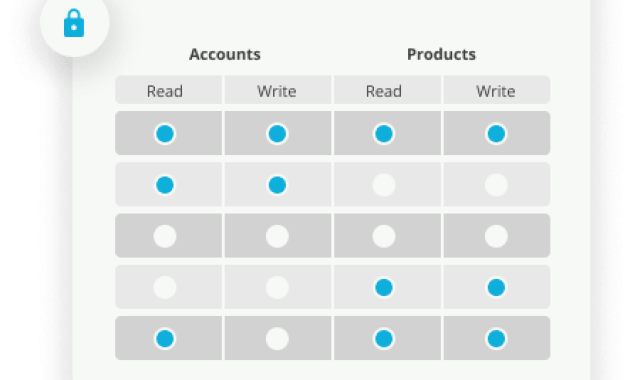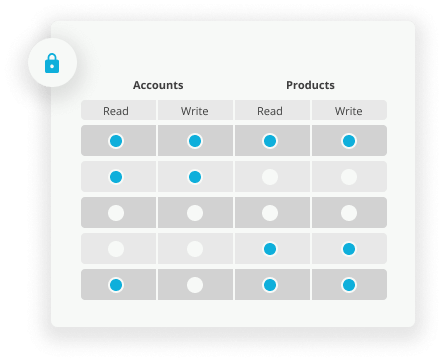
Master Your Metrics: How Self-Service Business Intelligence Software Empowers Data-Driven Decisions
In today’s fast-paced business environment, data is king. Companies are drowning in information, but often struggle to extract meaningful insights. The ability to understand and act upon this data is crucial for success. This is where self-service business intelligence (BI) software steps in. It empowers users to analyze data independently, without relying on IT or data specialists. This allows for faster decision-making and a more agile approach to business challenges. The power of self-service BI lies in its accessibility and user-friendliness. It transforms raw data into actionable intelligence.
Democratizing Data: The Rise of Self-Service BI
Traditional BI solutions often involved complex processes and specialized expertise. Data analysis was a bottleneck. Requests had to be submitted to IT departments. This process could take days or even weeks. Self-service BI software breaks down these barriers. It provides intuitive interfaces and drag-and-drop functionality. This allows users across various departments to explore data. They can create dashboards and reports with ease. This democratization of data is a key benefit. It fosters a data-driven culture throughout the organization. This shift is transforming how businesses operate. It allows for more informed choices at every level.
Key Features and Benefits of Self-Service BI Software
Self-service BI software offers a wide range of features. These are designed to make data analysis accessible and efficient. Some key features include:
- Data Visualization: Interactive dashboards and charts. These allow for easy understanding of trends and patterns.
- Data Integration: The ability to connect to various data sources. These may include databases, spreadsheets, and cloud services.
- Data Preparation: Tools for cleaning, transforming, and shaping data. This ensures accuracy and consistency.
- Reporting and Analysis: Capabilities to create custom reports and perform in-depth analysis.
- Collaboration: Features that enable users to share insights and collaborate on projects.
The benefits of using self-service BI software are numerous. They include:
- Faster Decision-Making: Access to real-time data and insights. This enables quick responses to market changes.
- Improved Efficiency: Reduced reliance on IT departments. This frees up resources for other tasks.
- Enhanced Collaboration: Shared dashboards and reports. This promotes better communication and alignment.
- Increased Data Literacy: Empowerment of users to understand and utilize data. This fosters a data-driven culture.
- Cost Savings: Reduced need for specialized data analysts. This can lead to significant cost savings.
Choosing the Right Self-Service BI Software
Selecting the right self-service BI software is crucial. The best choice depends on your specific needs and requirements. Here are some factors to consider:
- Ease of Use: The software should be intuitive and easy to navigate. This ensures quick adoption by users.
- Data Connectivity: Ensure compatibility with your existing data sources. The software should integrate seamlessly.
- Scalability: The ability to handle growing data volumes and user needs. Choose software that can scale with your business.
- Features and Functionality: Evaluate the features offered. Ensure they meet your specific analysis and reporting needs.
- Security: Robust security features to protect sensitive data. Ensure compliance with relevant regulations.
- Cost: Consider the pricing model and total cost of ownership. Choose a solution that fits your budget.
Popular self-service BI software options include Tableau, Power BI, Qlik Sense, and Looker. Each offers unique strengths and caters to different user needs. Careful evaluation is necessary. This ensures the best fit for your organization.
Real-World Applications of Self-Service BI
Self-service BI software is used across various industries and departments. It provides valuable insights in numerous scenarios. Here are some examples:
- Sales and Marketing: Track sales performance, identify top-performing products, and analyze marketing campaign effectiveness.
- Finance: Monitor financial performance, analyze cash flow, and forecast future revenue.
- Operations: Optimize supply chain efficiency, track production output, and identify bottlenecks.
- Human Resources: Analyze employee performance, track recruitment metrics, and manage workforce planning.
- Healthcare: Analyze patient data, improve operational efficiency, and monitor healthcare outcomes.
These examples demonstrate the versatility of self-service BI. It empowers users to make informed decisions across all business functions. Self-service BI software is transforming how businesses operate. It fuels data-driven decision-making.
Overcoming Challenges and Best Practices
While self-service BI offers numerous benefits, some challenges must be addressed. Successfully implementing self-service BI requires careful planning and execution. Consider the following:
- Data Quality: Ensure data accuracy and consistency. Implement data governance policies.
- User Training: Provide adequate training to users. This ensures they can effectively utilize the software.
- Data Security: Implement robust security measures. Protect sensitive data from unauthorized access.
- Data Governance: Establish clear data governance policies. Define data ownership and access controls.
- Change Management: Manage the transition to a data-driven culture. Promote data literacy.
By addressing these challenges, organizations can maximize the value of self-service BI. They can foster a data-driven culture. This empowers them to make more informed decisions.
The Future of Self-Service BI
The future of self-service BI is bright. Technological advancements will continue to shape the landscape. Expect to see:
- Increased Automation: AI and machine learning will automate tasks. This includes data preparation and analysis.
- Enhanced Collaboration: Improved collaboration tools. This will facilitate sharing insights and teamwork.
- Advanced Analytics: More sophisticated analytical capabilities. These will include predictive modeling and prescriptive analytics.
- Mobile BI: Increased access to data and insights on mobile devices. This will enable on-the-go decision-making.
- Embedded BI: Integration of BI capabilities into other applications. This will streamline workflows.
Self-service BI software will continue to evolve. It will become more powerful. It will become easier to use. This will further empower businesses to master their metrics. The data-driven revolution is here. Self-service BI is leading the way. Businesses that embrace self-service BI will gain a significant competitive advantage. They can unlock the power of their data.
Conclusion: Embrace Self-Service BI to Master Your Metrics
Self-service business intelligence software is a game-changer. It empowers businesses to master their metrics. It fosters a data-driven culture. This leads to faster, more informed decisions. By choosing the right software and implementing best practices, organizations can unlock the full potential of their data. They can gain a competitive edge in today’s dynamic market. The ability to analyze and act upon data is no longer a luxury. It’s a necessity. Embracing self-service BI is a crucial step toward success. It is a crucial step in the modern business landscape. Self-service BI software transforms data into actionable insights. This is the key to achieving business goals. This is what makes self-service BI so valuable.
[See also: Related Article Titles]

